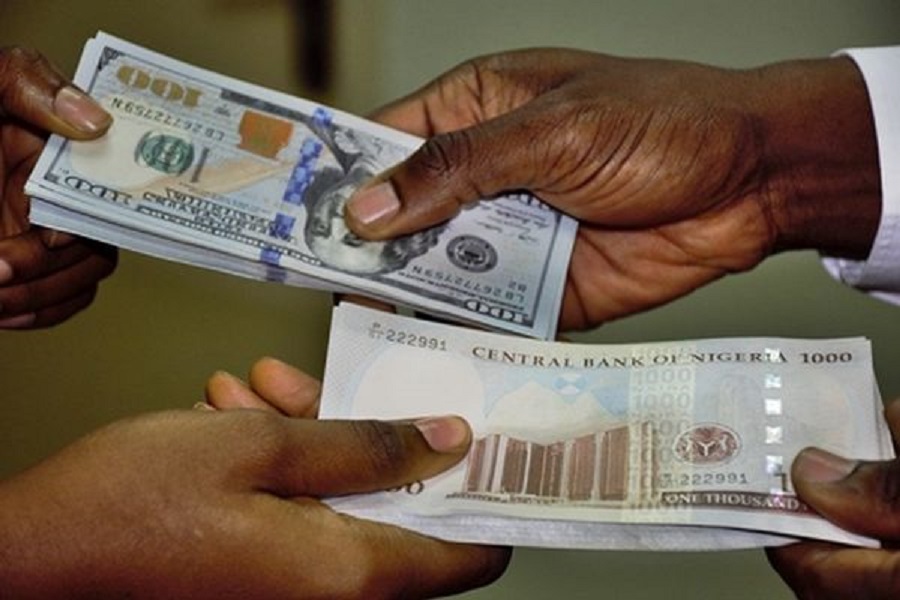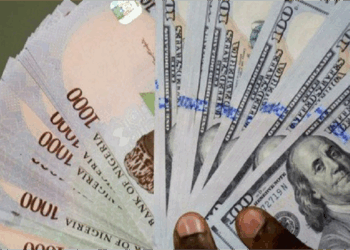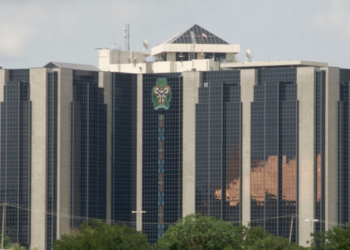Nigeria’s exchange rate at the NAFEX window continued to remain stable against the dollar to close at N386/$1 during intraday trading on Monday, October 26.
Also, the naira maintained its stability against the dollar, closing at N463/$1 at the parallel market on Monday, October 26, 2020, as currency traders resume business activities after state governments relaxed the curfew initially imposed to curtail the widespread violence that followed the hijacked #EndSARS protests.
READ: Naira maintains stability in forex markets, dollar supply improves despite curfew
This is also as businesses shut down due to the outbreak of violence in Lagos and some parts of the country during the protests against the special anti-robbery unit (SARS) and police brutality by the Nigerian youth.
Explore Data on the Nairametrics Research Website
Parallel market: According to information from Abokifx – a prominent FX tracking website, at the black market where forex is traded unofficially, the Naira remained stable against the dollar to close at N463/$1 on Monday. This was the same rate that it exchanged for on Friday, October 23.
READ: Exchange rate maintains stability as BDCs expect another dollar supply from CBN
- The local currency had strengthened by about 7.8% within the one week in September at the black market, as the CBN introduced some measures targeted at exporters and importers, in order to try to boost the supply of dollars in the foreign exchange market, and reduce the high demand for forex by traders.
- The CBN has sold over $500 million to BDCs since they resumed forex sales on Monday, September 7, 2020. This was expected to inject more liquidity to the retail end of the foreign exchange market and discourage hoarding and speculation.
- However, the exchange rate against the dollar has remained volatile after the initial gains made, following the CBN’s resumption of sales of dollars to the BDCs.
- The President of the Association of Bureau De Change Operators, Aminu Gwadebe, said he expects the impact of the extra liquidity in the market to be gradual.
- Despite the drop in speculative buying of foreign exchange, the huge demand backlog by manufacturers and foreign investors still puts pressure and creates a volatile situation in the foreign exchange market.
READ: Naira maintains stability at forex markets as dollar supply rise by 57%
NAFEX: The Naira remained stable against the dollar at the Investors and Exporters (I&E) window on Friday, closing at N386/$1.
- This was the same rate that it exchanged for on Friday, October 23.
- The opening indicative rate was N386.29 to a dollar on Monday. This represents a 29 kobo drop when compared to the N386 that was recorded on Friday.
- The N393.11 to a dollar is the highest rate during intraday trading before it closed at N386 to a dollar. It also sold for as low as N382/$1 during intraday trading.
Forex turnover: Forex turnover at the Investor and Exporters (I&E) window declined significantly by 81.14% on Monday, October 26, 2020.
- According to the data tracked by Nairametrics from FMDQ, forex turnover dropped from $197.42 million on Friday, October 23, 2020, to $37.23 million on Monday, October 26, 2020.
- The CBN is still struggling to clear the backlog of foreign exchange demand, especially by foreign investors wishing to repatriate back their funds.
- The drop in dollar supply after the previous trading day’s huge increase, reinforces the volatility of the foreign exchange market. The supply of dollars has been on a decline for months due to low oil prices and the absence of foreign capital inflow into the country.
- As part of the measure to check forex abuse and check illegal transactions, the CBN last month directed the freezing of accounts of about 38 companies.
- The average daily forex sale for last week was about $169.93 million, which represents a huge increase from the $34.5 million that was recorded the previous week.
- Total forex trading at the NAFEX window in the month of August was about $857 million, compared to $937 million in July.
- The exchange rate is still being affected by low oil prices, dollar scarcity, a backlog of forex demand, and a shaky economy that has been hit by the coronavirus pandemic.
























